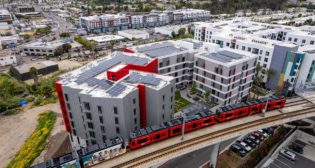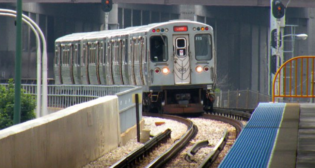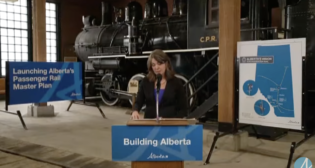
Transit Briefs: TransLink, Calgary Transit, CDOT, PANYNJ, NYMTA
Written by Carolina Worrell, Senior Editor
Rendering Courtesy of British Columbia, via Flickr.
Eight new station names are announced for TransLink's Surrey Langley SkyTrain extension. Also, a section of Calgary Transit’s LRT Red Line reopens following a nine-day closure; the Colorado Department of Transportation (CDOT) explores the market for passenger train cars and locomotives; the Port Authority of New York and New Jersey (PANYNJ) installs five new test turnstiles for a new fare payment system; and the New York Metropolitan Transportation Authority (MTA) announces the installation of wide-aisle fare gates and a new customer service center at Sutphin Boulevard-Archer Avenue-JFK Airport Station.
TransLink
TransLink says its Surrey Langley SkyTrain extension is “one step closer” with the announcement of the official names of eight stations.
The new station names are as follows:
- Green Timbers Station (140 Street and Fraser Highway)
- 152 Street Station (152 Street and Fraser Highway)
- Fleetwood Station (160 Street and Fraser Highway)
- Bakerview-166 Street Station (166 Street and Fraser Highway)
- Hillcrest-184 Street Station (184 Street and Fraser Highway)
- Clayton Station (190 Street and Fraser Highway)
- Willowbrook Station (196 Street and Fraser Highway)
- Langley City Centre Station (203 Street and Fraser Highway)
“Today’s announcement provides an important update to the Surrey Langley SkyTrain project bringing us one step closer to the official start of construction and signaling a better connected and more affordable future for Metro Vancouverites, particularly those of us living south of the Fraser,” said John Aldag, MP for Cloverdale-Langley City on behalf of Sean Fraser, federal Minister of Housing, Infrastructure and Communities. “Investments in public transit infrastructure help Canadians get where they need to go safely and efficiently, take cars off roads, and support housing development. We’re proud to celebrate Canada’s contribution of up to $1.3 billion alongside our partners with whom we will continue to collaborate on funding projects that will improve the livability in our region and ensure a lower emission future for our country.”
The Surrey Langley SkyTrain project is a 16-kilometer (3.7-mile) extension of the Expo Line that will run from King George Station to Langley City Center, the first rapid transit expansion south of the Fraser River in 30 years. Once complete, commuters will be able to travel on transit from Langley city to downtown Vancouver in just over an hour.
“This is another important step in moving this project forward from concept to reality,” said Rob Fleming, Minister of Transportation and Infrastructure. “The Surrey Langley SkyTrain is going to transform the way people live, work and travel both south of the Fraser and around the region. The stations we are naming today will become community landmarks and will be recognized for decades to come.”
According to TransLink, SkyTrain station names are selected by the agency and made easily identifiable to make it simpler for transit riders to navigate the system.
“It’s estimated 50,000 new residents will continue to move into Metro Vancouver every single year,” said Brad West, mayor of Port Coquitlam and chair of the Mayors’ Council. “By investing in public transit, we are helping make the lives of these new British Columbians easier while simultaneously improving the quality of life and travel for everyone else.”
The station name development process, TransLink says, included mapping exercises, stakeholder consultation, community and neighborhood plan reviews, and a study of land-use policies to better understand future development in areas surrounding the stations.
The areas adjacent to new stations are key locations where the Province of British Columbia will support transit-oriented developments to create “efficient, vibrant communities where people can rely on public transit to connect them to their work and social lives.”
The project is being delivered through three separate contracts: the guideway; the stations; and the systems and trackwork. Earlier this year, the Province announced the firms that were selected to respond to the requests for proposals. It’s anticipated that contracts will be awarded in early 2024.
Advance work has been under way since 2020, including the now-complete widening of Fraser Highway between 140 and 148 streets, as well as utility relocations.
Construction on the Surrey Langley SkyTrain is expected to begin in 2024.
Calgary Transit
Calgary Transit’s LRT was running again on Monday, Dec. 4, next to Macleod Trail into the core after being shut down since Nov. 24, according to a CBC News report.
According to the report, the stretch between City Hall/Bow Valley College Station and Chinook Station was closed for nine days to allow crews to “complete a key phase of construction in the Victoria Park/Stampede station rebuild—the switch from the temporary track and platform to the new, permanent track and platform.”
According to the CBC News report, the city says that work is now completed, allowing the resumption of service on the Red Line and the opening of pedestrian access onto Stampede Park from Macleod Trail.
The service disruption forced Calgary Transit to organize its largest ever replacement shuttle service, between Chinook Station and City Hall/Bow Valley College Station, according to the report.
“The switch was a significant undertaking, both in construction scope and in our operational response,” said City of Calgary General Manager of Operational Services Doug Morgan, in a release.
“We implemented our city’s largest-ever replacement shuttle service to maintain transit service through the switch. We are grateful to teams at Transit, Mobility and across the City of Calgary for their dedication in keeping people moving through these nine days. And we sincerely thank Calgarians for their patience and understanding on transit and on the roads during this time.”
To thank Calgarians for their patience during the switch, December monthly transit passes are available at a 25% discount.
However, CBC News reports, “there is still more work to be done in order for the Victoria Park/Stampede station to be ready for an official completion in concert with the opening of the BMO Centre expansion in time for Stampede 2024.”
According to the report, over the coming months, crews will complete the pedestrian and vehicle track crossings at 14th Avenue and 17th Avenue, construct sidewalks and install shelters on the inbound platform.
“There will be some ongoing lane closures on Macleod Trail between rush hours and overnight through the coming months to allow for continued work on the project,” the city said.
CDOT
In a step that “demonstrates its determination to pursue passenger rail service from Denver to Craig, Colo.,” CDOT has issued a call for manufacturers to show what train vehicles they have available for a mountain rail line.
CDOT has issued a “request for information (RFI)” to train equipment manufacturers and vendors on what fleet options are available for rolling stock — otherwise known as train cars and locomotives. Companies have 45 days to respond.
The RFI, CDOT says, “is not a solicitation for bids and is not meant to result in a contract or order for equipment. Rather, it is an effort to understand what rolling stock might be available for mountain rail service.”
“This is an important first step to understanding what technology is on the market that could meet the needs of mountain conditions,” said CDOT Executive Director Shoshana Lew. “We’re interested in factors like cost, safety technology, reliability and the use of energy efficiency options and clean power.”
The vision for mountain rail became a real possibility in recent months because of developments that include “dramatically decreased coal train traffic on Union Pacific (UP) rail lines, creating a new transit opportunity for Colorado and an opportunity for UP to host more passenger rail on its mountain lines,” CDOT said. UP lines already serve the California Zephyr and Winter Park ski trains, but there is capacity for more passenger service, including from Denver to Steamboat Springs, Hayden and Craig.
The other major precipitating event was Congress making $66 billion for passenger rail available through the Infrastructure Investment and Jobs Act (IIJA). Because the Denver-to-Craig service would only require minimal track and safety improvements, CDOT is hoping that the mountain rail project would be an attractive candidate for federal funding.
Meanwhile, the Colorado Transportation Commission has approved $5 million in state funding for CDOT to study the mountain rail route, as well as examine enhancing bus service statewide. This study, CDOT says, will help the Department “determine how much ridership the line would have, how frequently trains should run, where stations should be and what operating, and construction costs might look like.”
The 191-mile Denver-to-Craig route has major advantages in that the rail line is already built and essentially would just need some safety and capacity improvements, according to CDOT. This means major cost savings compared to a project where an entirely new rail line would be needed.
CDOT has asked train manufacturers to show whether they have locomotives and train cars that can handle the steep grades, high altitude and sometimes low temperatures of the Denver-to-Craig route. Train cars should carry 200 passengers and have “comfortable and upscale furnishings, including tables at facing seats and not more than 2×2 seat configuration.” Vendor should also provide options for a lounge or cafe car and for Wi-Fi service.
PANYNJ
Beginning Dec. 5, PANYNJ has begun a real-world test of five turnstiles equipped with its PATH commuter railroad new tap-and-go fare payment system, with expansions planned to occur in phases based on experiences with the pilot turnstiles.
PANYNJ also announced that the new modern contactless system will be named TAPP, which stands for “Total Access PATH Payment.”
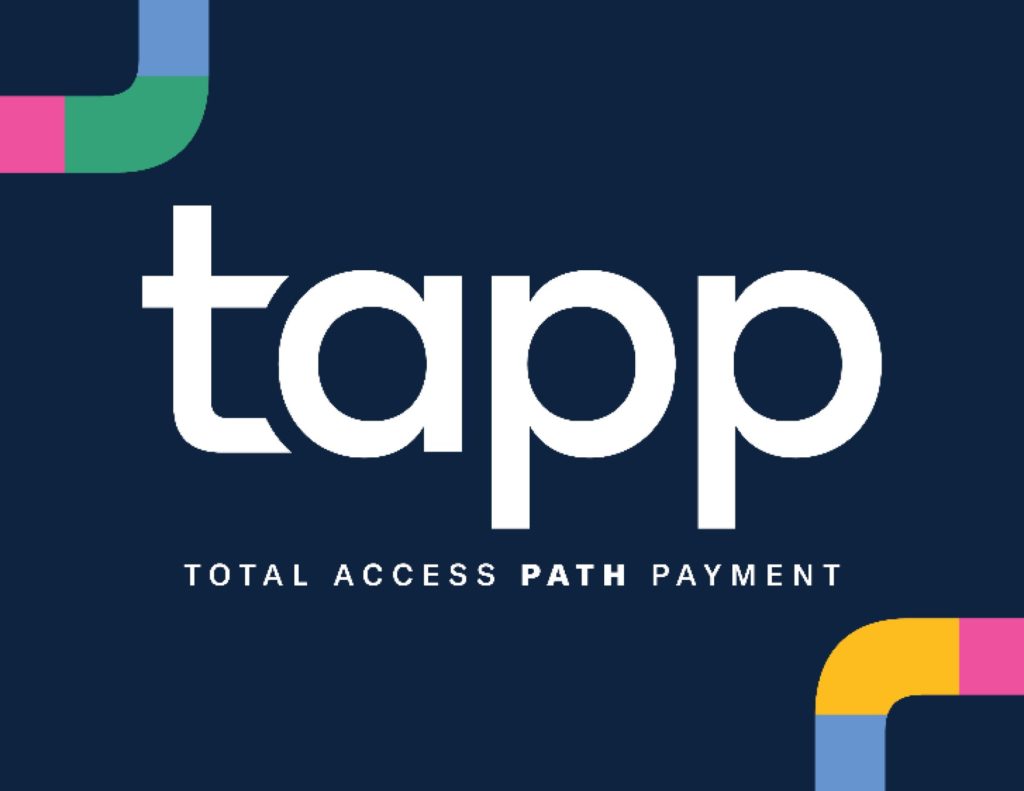
The five pilot TAPP turnstiles are available to PATH riders at two PATH terminal stations, Journal Square in Jersey City and 33rd Street in Manhattan. Turnstiles that are part of the TAPP pilot at the 33rd Street station are located at the terminal’s 30th Street entrance. The five turnstiles that are part of the TAPP pilot feature colorful wraps to help passengers identify them from a distance. TAPP, PANYNJ says, is an “open-loop contactless payment system, which allows customers to use any contactless credit/debit card or the digital wallets in their own devices at PATH turnstiles, instead of specific PATH-issued SmartLink cards or pay-per-ride MetroCards.”
Cubic Transportation Systems Inc. was awarded the agency’s contract to design and install the new TAPP system in November 2021 by the Port Authority Board of Commissioners. The contract, PANYNJ says, also included software development and installation, the purchase and installation of required equipment and upgrades, and the implementation of all backroom processing capabilities necessary to support the new system.
Subject to the experience with the test turnstiles, PANYNJ says the new equipment will be phased in over a 12- to 18-month period. During phase-in and for a substantial period thereafter, equipment supporting SmartLink and MetroCard will remain operational as customers become familiar with the new system. New TAPP turnstiles will be installed gradually throughout the system.
“Our customers have been asking for a tap-and-go fare payment system and PATH’s pilot of this new technology helps create a seamless experience that opens up travel options to more riders,” said Port Authority Chairman Kevin O’Toole. “PATH stitches the region together, which is why it is important that the Port Authority must make historic investments in technology to ensure that remains the case well into the future.”
“This pilot program will allow us to put our new TAPP system through its paces before we roll it out to more stations and eventually systemwide,” said Port Authority Executive Director Rick Cotton. “We are eager to move forward to make the TAPP tap-and-go fare payment system available to PATH riders as soon as possible.”
“The TAPP pilot is the first step in an exciting transformation of our fare payment system, one designed to eventually provide faster, more accessible, and more convenient service for all of our riders,” said Clarelle DeGraffe, general manager and director of PATH.
NYMTA
The New York MTA on Dec. 4 announced the first-ever low turnstile fare array replacement with new wide-aisle fare gates at Sutphin Boulevard-Archer Avenue-JFK Airport (E, J, Z) Station in Jamaica, Queens.
The installation of modern fare gate technology, MTA says, “reflects the agency’s commitment to reimagining fare arrays in the subway system, enhancing accessibility and improving the station environment.” The new faregates replace the emergency exit gate at that end of the station, which was a major contributor to subway fare evasion. The wide-aisle design of the new faregates allows customers with strollers, wheelchairs, and luggage to smoothly enter the system. This, the agency says, will allow the MTA to examine the feasibility of placing new fare gates at other stations in the future.
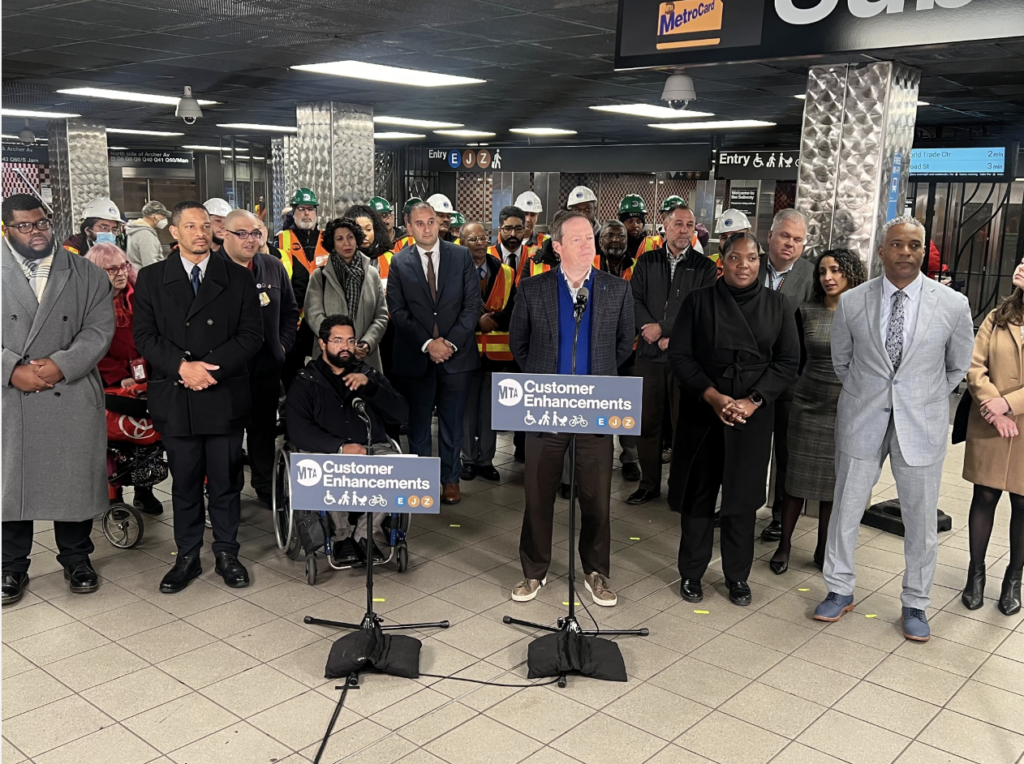
According to MTA, this is the first full deployment of new fare gates in the subway system following a pilot of the wide-aisle gates at Atlantic Avenue-Barclays Center subway station in March 2023. In addition to wide-aisle gate installation, four traditional turnstiles were installed at the north end of the mezzanine to enhance customer flow. All new fare gates are equipped with OMNY, the MTA’s new tap-and-go fare collection system.
MTA also announced the opening of a new customer service center, making this station the 14th center in the subway system. Customer service centers, the agency says, “provide services historically limited to 3 Stone Street located in Lower Manhattan, but now enable MTA to meet customers where they are directly in stations in their home boroughs.”
Centers are comprised of repurposed booths and new retail outlets, and feature enhanced accessibility, OMNY technology, and a dedicated, more welcoming visual presentation for customers. This includes new lighting, branded wrapping, and canopies with enhanced customer service functions, such as station agents on hand to assist in converting riders to OMNY, signing up for Reduced-Fare, and helping troubleshoot general concerns.
New York City Transit (NYCT) plans to open another center before the end of the year, according to MTA.
“NYCT’s North Star is improving the customer experience, and we are doing just that at Sutphin Blvd by introducing new, easier to access, fare gates and by opening our 14th Customer Service Center,” said NYCT President Richard Davey. “Customers traveling to and from JFK with their luggage, commuters transferring from the LIRR at Jamaica, and local commuters can look forward to faster, more accessible journeys, and a more welcoming station environment.”
“With a direct link to the AirTrain the Sutphin Boulevard-Archer Avenue-JFK Airport subway station is often visitors’ first introduction to New York, making it a perfect spot for a new customer service center and wide aisle fare gates,” said MTA Acting Chief Customer Officer Shanifah Rieara. “The station agents at the center will help both first time customers navigate the system and long-time customers with any issues that may arise.”
